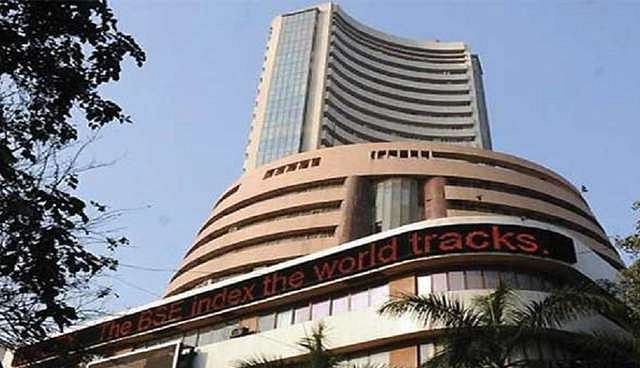
Why The Sensex Is On Course For Hitting 35K By Fiscal Year-End
While Samvat 2074 has begun in the midst of economic uncertainties for the Indian economy, with both demonetisation and the goods and services tax (GST) impacting business sentiment, these problems should be over in the next six months.
This means by next Diwali, both the Sensex and the Nifty may well be higher, though no one can predict market movements with certainty.
Muhurat trading for Samvat 2074, held on 18 October, was an insipid affair, with the Sensex losing 194 points and the Nifty also falling. While some will see this as an inauspicious beginning, the reality is that what happens on one day may not represent what will happen in the rest of the year.
This was proved amply when, barely a week later, when Finance Minister Arun Jaitley announced a massive Rs 2.11 lakh crore bank recapitalisation and an investment of Rs 7 lakh crore in road-building over the next five years, the markets immediately caught fire. The Sensex crossed 33,000, and could well top 35,000 in the remaining months of the financial year.
While Samvat 2074 has begun in the midst of economic uncertainties for the Indian economy, with both demonetisation and the goods and services tax (GST) impacting business sentiment, these problems should be over in the next six months. This means by next Diwali, both the Sensex and the Nifty may well be higher, though no one can predict market movements with certainty.
My guess is that the 12 months to the next Muhurat Day will see a broad increase in the indices, but the focus of share price movements will be on sectors that have been written down a bit too much. If one adopts a sectoral approach, one can do well in stocks. So, which are the sectors that will shine bright now?
My first sector is exports. Any sector that is focused on exports will do well, since the world economy is recovering and this is being reflected in the smart rise of 26 per cent in India’s own exports in September – the highest in the last few years. It is also the 13th consecutive month of growth, though earlier increases were small. What this suggests is that companies in the exporting sector will gain, especially if the rupee weakens slightly from its current levels though the year. Companies will also try to export more so that weak domestic sales in the short run are compensated.
The main export sectors like textiles, engineering goods, software services, petroleum products and pharmaceuticals should do well in the year ahead. It is also interesting that both software and pharma were beaten down sectors in the recent past. Both could recover.
The next sector that should look up by April next year are real estate and construction. At no time in recent years have so many concessions been given to real estate, with affordable housing getting a big boost. Not only are all profits from affordable housing tax-free for five years, but even loans for affordable housing get interest subsidies of three to four per cent.
Some housing companies should thus do well, but a caution is also in order: many housing companies operate in the cash end of the market, and often their home sales do not fully reflect in share values. In fact, listed housing companies were the worst wealth destroyers between 2008 and last year. So be careful.
The construction and infrastructure sector should see improving fortunes, not least because we are approaching election season, and governments tend to spend a lot more as assembly and general elections approach. With Jaitley talking of huge funding for the Bharatmala highways project, this sector should also do well.
Linked to the real estate and construction sectors are many core sector companies. When housing and construction go up, the demand for steel, cement, plastics, etc, also goes up. While some of the companies in these sectors have already risen in anticipation, one can expect shares in these sectors to remain firm, if not rise even from current levels.
When overall economic activity rises, we should also expect banks to rise, but here again one must be selective. While private sector banks like HDFC Bank, Axis, Kotak, ICICI Bank and IndusInd will continue to do well, it is unlikely that public sector banks can do well as a group. In fact, one should be careful about investing in smaller public sector banks, which may either have to be merged with larger banks, or forced to restrict lending as they deal with bad loans. It is only the top four or five public sector banks that could gain a bit in Samvat 2074. But post the bank-recap announcement, one cannot rule out investors rebalancing their portfolios by shifting some of their investments from overvalued private banks to undervalued public sector banks. The top five to 10 public sector banks should be a shoo-in for valuation gains over the next year, with some of the gains already priced in.
As always, readers should not see the above as an invitation to invest. These are only broad indicators, and actual investment should be based on professional advice. But macro-economically, these are the sectors that seem ripe for a revival.
(This is a modified version of an article first written for Dainik Bhaskar)